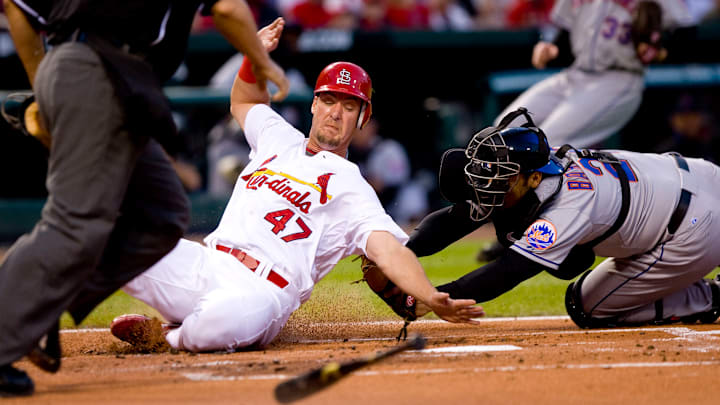Ryan Ludwick
Ryan Ludwick did not enter the Cardinals organization with much fanfare. A second-round pick by the Texas Rangers in 1999, Ludwick hit just .237 from 2002 to 2005 before the Cardinals signed him as a free agent after their championship 2006 season. Ludwick began 2007 in Triple-A Memphis but was promoted after hitting .340 in 121 plate appearances.
Ludwick's emergence into an above-average major league player coincided with a downturn in the Cardinals' fortunes, as they missed the postseason in 2007, 2008 and 2010 and were swept in the first round in 2009. But Ludwick was a bright spot during these transitional years, hitting .299 with 37 home runs and finishing second on the team in bWAR behind Albert Pujols in 2008 while making the All-Star team and winning a Silver Slugger Award.
Ludwick hit .280 in his Cardinals career and was sent to the San Diego Padres in 2010 in a three-team trade that netted the Cardinals Jake Westbrook and Nick Greenwood. From 2010 to 2014, Ludwick was about league average, hitting .250 with a 101 OPS+ with the Padres, Pittsburgh Pirates and Cincinnati Reds.
Ludwick seemed destined to bounce between Triple-A and the major leagues until the Cardinals sprinkled some of their patented Devil Magic on him. He may not be remembered as well as some other Cardinals given that his time in St. Louis was nestled between two World Series victories, but his acquisition was a resounding success for the front office.
